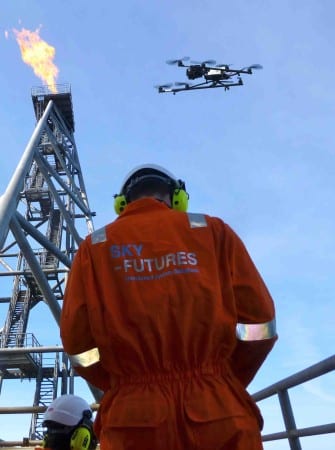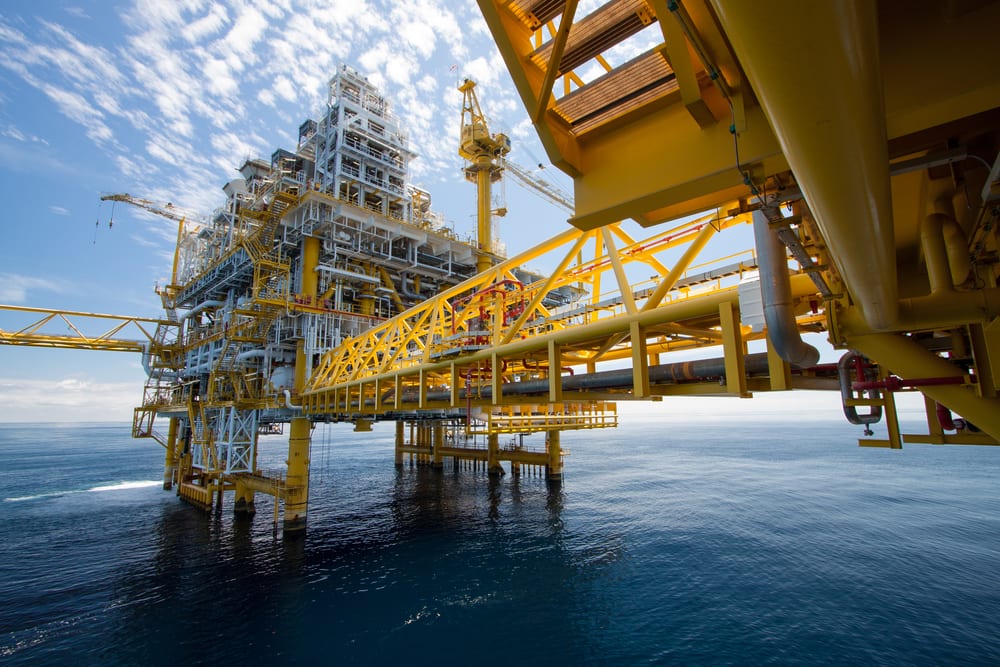Drones could soon be a regular addition to the silhouette of onshore and offshore oil rigs on the horizon.
Strict — but loosening — regulations on commercial drone operation in the US mean that drone inspection services for oil rigs have been slow to take off. But that is poised to change as the FAA adjusts its rules and significant investments pave the way for drones to take on more responsibility in the field.
U.K.-based drone services company Sky-Futures has locked down more than $4 million from venture capitalists and GE-backed Airware, which recently announced its Commercial Drone Fund to support commercial drone businesses around the world. MMC Ventures’ $3.8 million investment last month is said to be Europe’s largest-ever for a drone company.
Cool Tech, Improved Safety
“We are just beginning to scratch the surface of UAV [unmanned aerial vehicle] uses in the the field,” says Jason Forte, VP of business development at Sky-Futures. The company has dealt exclusively in oil and gas inspection services and has worked with about 30 of the biggest producers, including some in the Gulf of Mexico, after securing one of the FAA’s first commercial drone licenses.
Sky-Futures’ pilots send sensor-equipped drones to both onshore and offshore facilities to do live flare, under-deck and emergency inspections and other scenarios. The idea is that a drone can more safely and cost-effectively do the work currently being done by so-called rope-access workers.
No Human Replacement
But Forte says drone technology works in tandem with current methods.
SEE ALSO: GE Prepares Drones for Takeoff in Field Service
“We see our service as complementary to rope access. Prolonging the life of assets is what its all about,” he says. “Asset managers can use UAVs to inspect more of their equipment in less time and for less money. This leaves rope access to be focused on maintenance that may never have been accomplished otherwise.”
Humans he said, will still have to get to the small, tight places where machines cannot practically go.
Making Deferred, Difficult Work Possible
 For companies, drones can potentially net big savings. By sending a drone to do a live flare inspection prior to a scheduled shutdown, the operating company can get the right pieces and people in place to reduce equipment downtown by days or even weeks, saving “millions of dollars,” according to Forte.
For companies, drones can potentially net big savings. By sending a drone to do a live flare inspection prior to a scheduled shutdown, the operating company can get the right pieces and people in place to reduce equipment downtown by days or even weeks, saving “millions of dollars,” according to Forte.
Globally, Forte says UAV technology could potentially save the oil and gas industry “hundreds of millions” by prolonging the life of ultra-expensive assets. Not to mention the possibility of improving worker safety conditions or even preventing fatalities.
Big Data Play
While drones are the most noticeable part of Sky-Future’s business, Forte says the backbone of the company is actually data. Their sensor analytics are acute enough to detect corrosion growth over time or gas leakage.
“We don’t see ourselves as a UAV inspection company. We are a data collection and interpretation company that happens to use a UAV.“
Robotics and greater automation may be changing the way manual workers are utilized on oil rigs, but Forte points to back-end analytics as an area of promising job growth for the future.
“The amount of data that is gathered by a UAV is tremendous,” he says. “Over the coming years there will be a need to store, interpret and present this data in an efficient and user-friendly manner.”


The primary and immediate benefits of using “drones” for inspections are safety for the operator and speed of inspection. The places inspected are no less dangerous, but now it is a machine, not a person advancing into the hazard area. And because they fly the drones don’t need to use all of that climbing and safety rigging, with the result that the inspections do go much faster. This is a very good application for the technology.